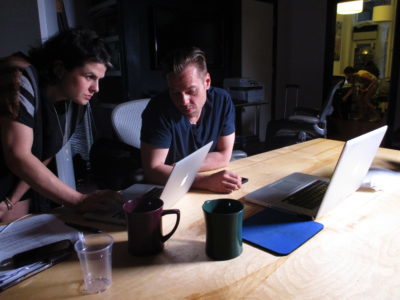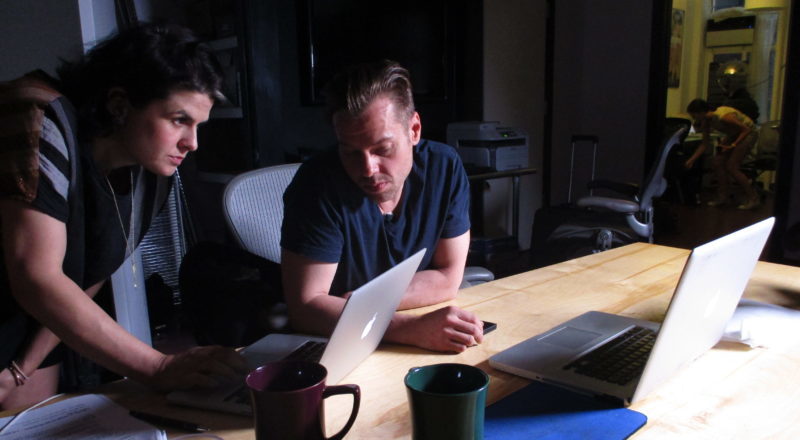INTERVIEW: ‘Killing Season’ on A&E looks into unsolved murder cases

The Killing Season, a new docu-series on A&E, investigates the troubling and tragic circumstances of an unsolved serial-killer case on Long Island, New York. The series, which premieres Saturday, Nov. 12 at 9 p.m., attempts to put a face on the victims in the case, rather than simply portraying them as statistics.
The series is executive produced by Alex Gibney (Enron) and Josh Zeman (Cropsey), and directed by Zeman and Rachel Mills. They track down many leads, talk to the victims’ family members, attempt to connect the dots and employ the help of virtual sleuths to figure out what happened on Long Island more than five years ago.
“I had done a previous documentary called Cropsey, which was about another serial murderer, and off that, people have been pushing me to do more things about serial killers,” Zeman said about his interest in the TV project. “But the problem is like once you are there kind of on the front lines, talking to people, spending your life kind of immersed in the subject matter, it’s really hard to do another one. And so for a long time, I really resisted the idea of doing another case that looked at serial murder, but then this case in Long Island happened.”
The initial details of the case were horrifying. Four women, apparently all sex workers, were found dead, according to a press release for the TV show. As the investigation broadened, remains from six other victims were found. “So at first it was kind of crazy just the extent of the carnage in this case, and we immediately thought it was going to be solved because we immediately think so many things are going to be solved in this kind of post-CSI world,” Zeman said. “One year went by, and it didn’t get solved. And then another year went by, and it didn’t get solved. And that was an opportunity for us to start picking up the camera and to ask ourselves, why? Why didn’t this case get solved? What was preventing it? Was it the fact that these women were sex workers, or was it something else?”
Mills said their intention was not to solve the case. Their mission was to explore and ask questions. As the filmmaker said, the eight episodes are about laying down the facts and separating the theories.
“For us, it’s not so important to point fingers at anyone and say, ‘This is our own personal belief that this person did it,'” Mills said. “It’s really just to lay the facts of the case out there, and also not just the facts of the case, but the contributing societal broken system that we get into later in the series to really talk about what contributed to cases like this happening, not just in Long Island but all over the country. People can come up and kind of figure out their own theories as to why.”
The filmmakers had to overcome a few obstacles. For one, the police didn’t talk to them, but also Zeman and Mills wanted to demystify the image that’s often associated with these high-profile cases. Hollywood tropes can quickly take over, and legend becomes fact in so many viewers’ minds. Plus, true crime is a popular topic on television and the Internet. HBO’s The Jinx, Netflix’s Making a Murderer and NPR’s Serial have the nation talking about cases, both solved and unsolved.
“We wanted to show the truth behind such serial-murder cases,” Zeman said. “You know, we watch TV, and we get the idea that these cases are solved very quickly. We think serial killers are all these Hollywood tropes, these evil geniuses, and what we immediately found was that this is not the case. These crimes are a lot more interesting, and detailed and nuanced.”
For both documentarians, it was important to portray the victims as real people. They didn’t want to create a “fly-by-night” TV show that was heavy on generalizations and light on details. Knowing who these victims were before their tragic deaths mattered to both Zeman and Mills.
“For the Long Island case, and actually most of the cases we investigate, it was very important for us to connect with the family members, and that took a long time,” Mills said. “It took a lot of trust. I mean, it was a circus when those bodies were found, when those women were found. The four women back in 2010, within like three days of each other, they were found, and [the families] were thrown into something they had no idea how to deal with — understandably. Fast forward four years, five years, it’s still the case. They are still being bombarded by media, but I think that we did a good job in getting their trust and to really tell them, ‘Look, we don’t want to rehash your family member’s story. We want to understand who they were.'”
Zeman added: “I think a lot of it was really trying to put a human face on these victims. A lot of them were sex workers, and it’s very easy to cast off sex workers as somehow deserving it. That’s what we do as a society. We blame the victim, and so what we’ve come to realize is that these women are our sisters, our mothers, our daughters, our aunts, and it’s too easy to just write them off. We’re not really taking the responsibility. We’re not really helping those who need our help the most.”
The Killing Season, which will run for eight episodes on A&E, covers many engaging topics in law enforcement and true crime. The filmmakers look into databases, jurisdictional problems, community speculation, conspiracy theories and debunking myths. These different facets are all part of the same story. “The clues are there,” Zeman said. “We just want people to concentrate on the right clues.”
By John Soltes / Publisher / John@HollywoodSoapbox.com
The Killing Season premieres Saturday, Nov. 12 at 9 p.m. on A&E. Click here for more information.

